Houseplant pests: types and methods of control
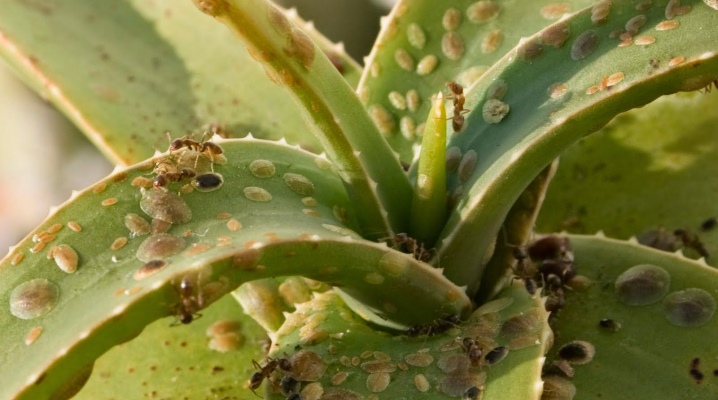
Indoor plants bring coziness to the house, enliven the atmosphere and at the same time require attention and care. It is recommended that they be inspected from time to time for the presence of insect pests, which can appear quite suddenly and undermine the healthy growth of flowers. If this moment is missed, the plant may die, since basically all types of such insects are very prolific and gluttonous, however, like all parasites.
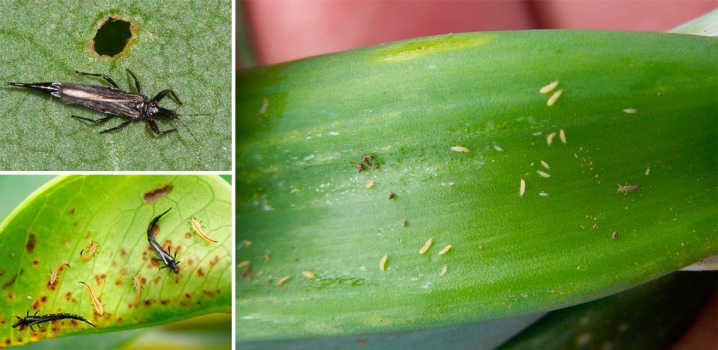
Where do they come from?
With insufficient care, the plant is highly susceptible to various diseases and the invasion of harmful insects. Lack of moisture or, conversely, its excess, improperly selected soil, untimely transplantation, incorrectly chosen place, remaining untreated sections after removing leaves and faded buds - all this weakens the planting. Houseplant pests appear imperceptibly, develop gradually and therefore are difficult to immediately notice. Mostly they are very small, and at the initial stage they are not even visible at all.
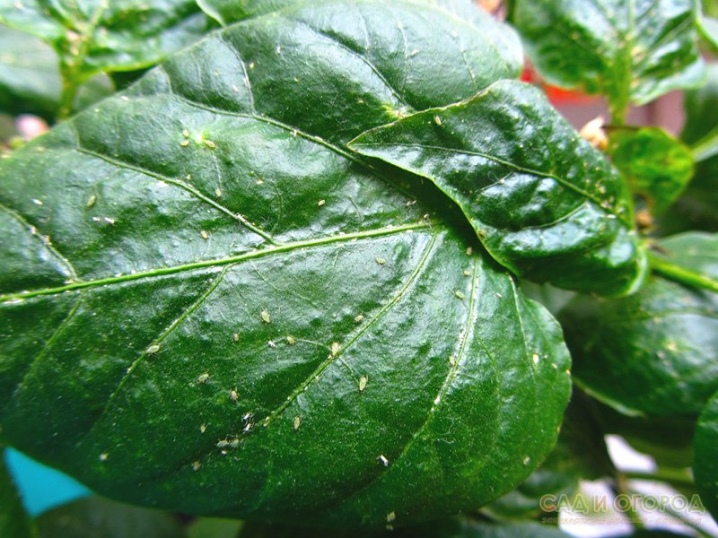
The appearance of parasites is different, depending on their type. Flying pests can fly through an open window. Others can be brought in with any plants from the street. Soil species enter the pot when replanting and replacing soil, especially if it is forest or garden land. It happens that indoor flowers, which were taken out into the street for the summer, return home already infected.
In the spring, when buying seedlings not in nurseries, but from random people on the way to the dacha, there is also a chance to bring unwanted guests.
It is worth noting that a well-groomed, healthy, strong plant, even in the presence of several accidentally caught pests, will be able to resist. For example, thrips are not able to bite through the elastic skin of a leaf or stem, therefore, without nutrition, they will fly away in search of a weaker specimen.

Insect species
All insect pests of indoor flowers can be conditionally divided into three types according to the type of their nutrition - this is sap-sucking plants, gnawing leaves and infecting the root... Of course, all species are dangerous, but the most insidious of them are those that sharpen the roots of plants, since you may not immediately understand what the problem is, and miss the time during which it would be possible to save the flower. Parasites that feed on plant sap or gnaw on leaves can be noticed sooner and, accordingly, all necessary measures can be taken to save the plants.
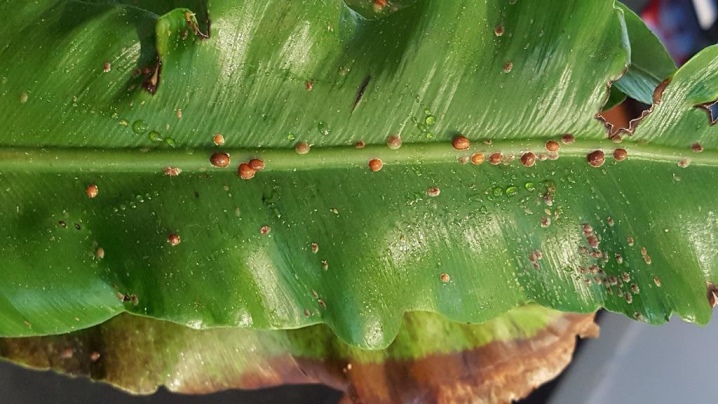
So, the most numerous representatives of suckers are aphids, worms, spider mites, thrips, whiteflies, scale insects.
- Aphids - these small insects known to all settle in colonies mainly on the upper shoots and in the leaf axils. They are easy to process, but they multiply again very quickly. There are winged and wingless species, they have different colors from dark brown to green. They feed on cell sap. Due to their high voracity, they can quickly destroy the plant.
The situation is aggravated by the fact that usually where there are a lot of aphids, ant settlements also actively reproduce, as they feed on the sweet juice that aphid larvae secrete.

- Shaggy aphid (another name is mealybugs), like the usual one, is distinguished by fertility. Adults are small fluffy white arthropods. The fact that the plant is infected with these parasites can be determined by the white powdery bloom on the leaves and stems.In such powdery lumps, the female lays eggs, from which larvae soon develop. Insects are usually found on the underside of the leaf.
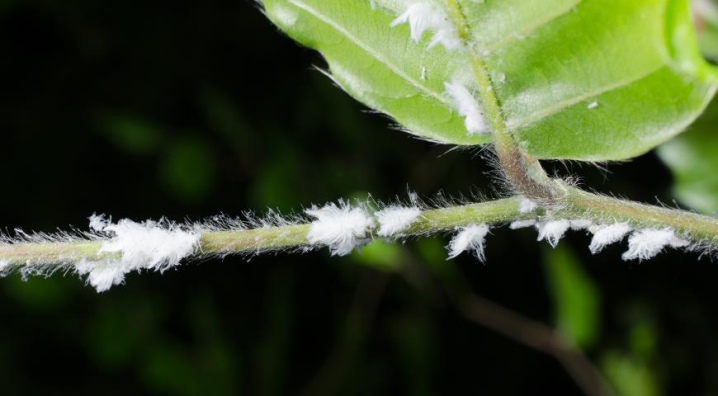
- Whiteflies - small yellowish midges with white wings. They lay eggs on the back of the leaf plate, they are visible to the naked eye. The eggs hatch into larvae that feed on the plant's cell sap. In this case, sticky traces remain on the leaves, on which, in addition, adults transfer various fungal infections.
You should be on the lookout, because already breeding whiteflies are very difficult to process.

- Spider mite belongs to the category of arachnids. They are microscopic spiders and are a particularly dangerous type of parasite for domestic plants, since they cannot be detected at the initial stage of infection. The initial signs of damage look like fine dust on the leaves, which is difficult to see.
The saddest thing is that when a cobweb appears on a plant, this is already an advanced stage, and the plant will surely die.
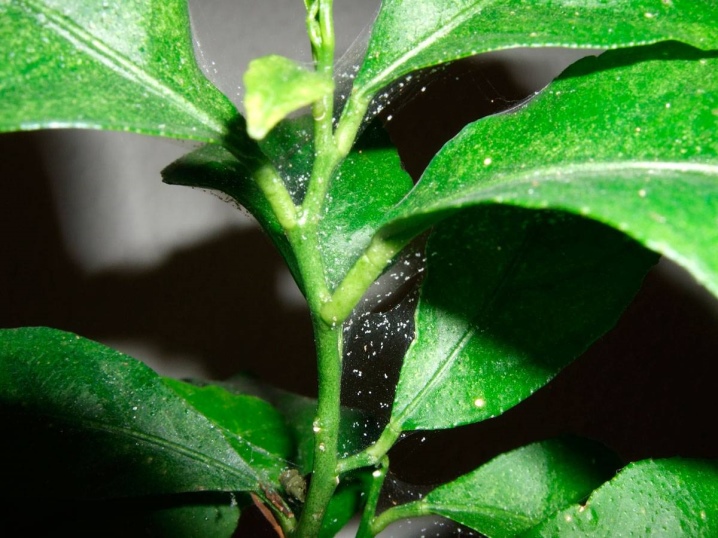
- Flying thrips they can settle on indoor plants with a lack of moisture. They are masked, as a rule, on the underside of the leaves; they can be detected by small holes with dark edging and silvery lines on the leaf plate. Females lay eggs in such holes in the thickness of the leaf. Adults look like small black worms with a pointed long reddish tail.
These parasites also multiply very quickly, feed on the cell sap of the plant.
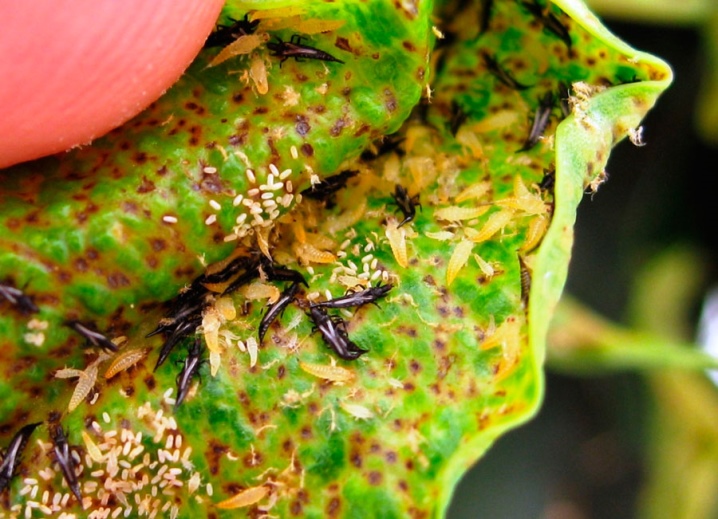
- Shields and false shields belong to the family of Coleoptera and Hemiptera parasites. They have a protective rounded shell, which reliably protects them from harmful influences, therefore they are difficult to process. The larvae look like wax drops adhering to the leaves and stems of the plant. But at the same time, they easily spread throughout the plant. But the adults are motionless.

Insects gnawing leaves and shoots: springtails, puffs, weevils.
- Legs and suckers belong to the group of collembolans that live in moist soil and feed on organic matter. This is a wingless type of arthropod, usually white or another light shade, which moves by jumping due to a strong elastic tail. They eat up the ground parts of the plant, rotting from excessive dampness.
- Weevil - one of the most dangerous pests that eats not only the plant mass, but also the roots and seeds. This coleopteran insect has a characteristic elongated head with a proboscis. With the help of this proboscis, bugs not only feed, but also drill deep holes in plant tissue in order to lay eggs, causing irreparable harm.
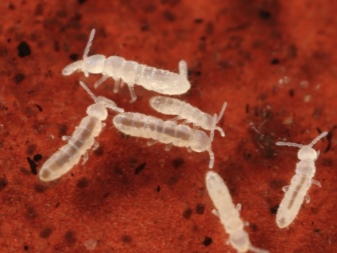
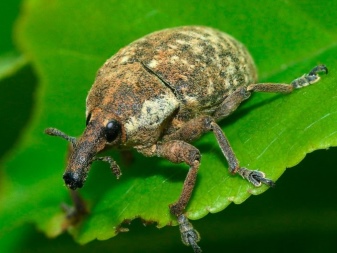
Parasites affecting the root system: nematodes, enchitrea, sciarids and others.
- Root worms - white small cylindrical beetles that live in the ground. They prefer fast drying light soils and usually settle on the roots. The affected plant becomes noticeably lethargic and does not rise even when watered.
With severe damage to the bugs, it can be found on the root collar of the plant.
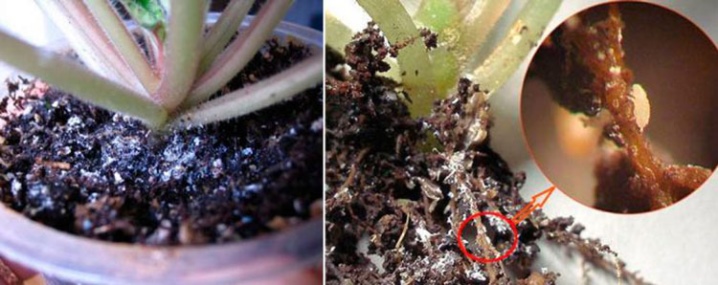
- Enkhitrei - yellowish translucent worms that live in the soil. In small quantities, they are not dangerous and, like earthworms, are used for soil processing. But with a large accumulation in the pot, the roots are damaged, which leads to the inevitable death of the indoor flower.
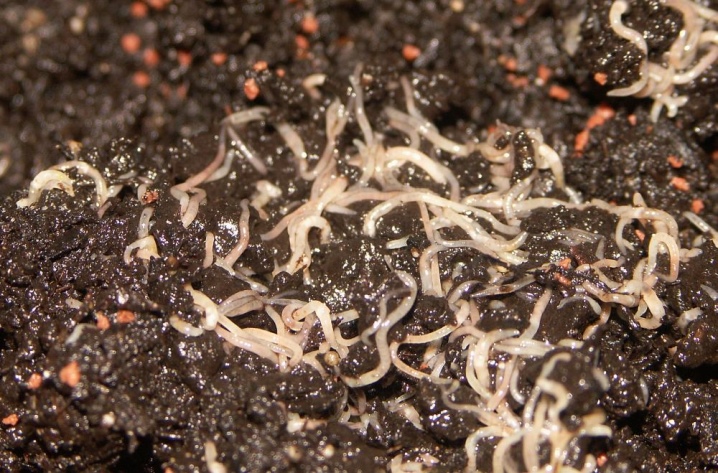
- Gall nematodes - round and tiny worms almost invisible to the eye. These are dangerous parasites that cause disease of the roots of meloidinosis, gallic swellings. Females are very fertile, they can lay up to 1000 eggs at a time, which rapidly develop and move to neighboring areas. The affected plant withers and dies very quickly.

- Sciarids Are mushroom mosquitoes that prefer waterlogged places and stagnant acidic soil.Mature individuals do not feed on plant tissues, but their larvae, laid by the female in the soil, severely damage the roots.
In addition, mosquitoes are carriers of various infections.
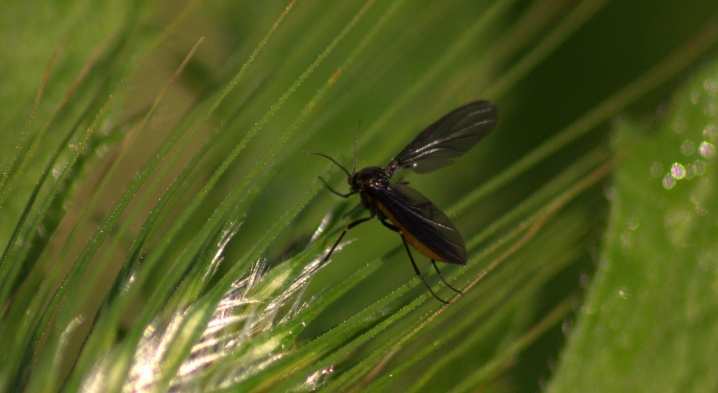
Signs of plant damage
You can determine the presence of pests on indoor plants by general signs:
- the plants look lethargic and stale;
- the leaves dry, begin to curl, and spots also appear on them;
- flowering stops;
- · Already existing flower buds do not open and crumble.
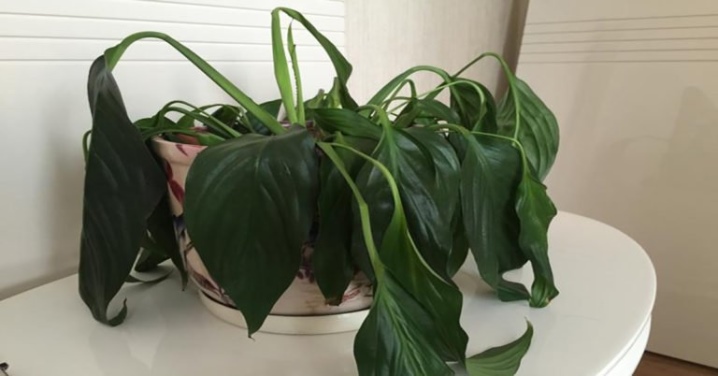
But according to some specific signs, it is possible to determine which insect has settled on the plant. For example:
- sticky leaves and white powdery bloom say that the plant is affected by hairy aphids;
- common aphid mainly affects the upper juicy young leaves and shoots, causes their deformation and dehydration, while releasing droplets of sticky juice, which can serve as a breeding ground for infection;
- thrips suck the juice from the leaves, after which they acquire a clear whitish tint, while brown dots and spots appear on the underside of the leaf, and the flowers take on an ugly shape;
- when a plant is damaged by a spider mite, a cobweb appears on the plant;
- the signs of the appearance of scale insects are especially pronounced and understandable - tubercles in the form of wax drops with a diameter of up to 5 mm appear on the stems and leaves;
- weevils gnaw, as a rule, round and oval holes on the leaves, deep pits in the stems can be noticeable;
- root-knot nematodes cause a general rather noticeable wilting of the plant and the appearance of blisters on its roots.


How to fight?
At the first signs of the presence of insect pests on indoor plants, it is urgent to process the plantings and the soil in the pot. It should be borne in mind that all of these insects are extremely fertile. If urgent measures are not taken, the plant can die very quickly, literally within a few days.
But no matter how gluttonous these parasites are, fortunately, there are many ways to get rid of them at home and save your plant.
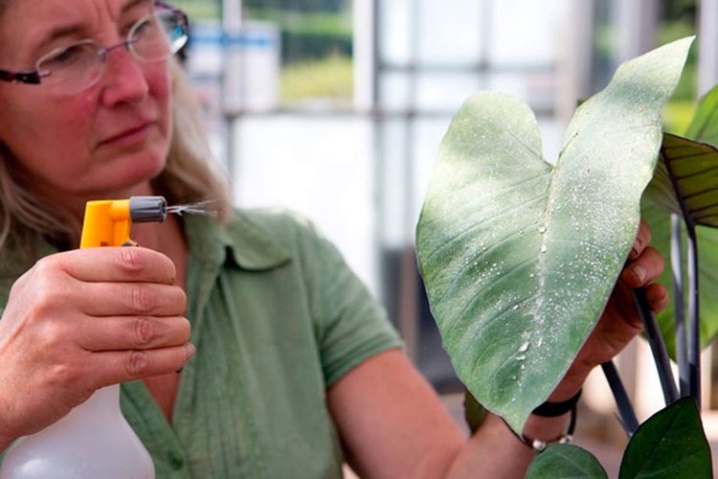
Mechanical method
The easiest and most environmentally friendly way is mechanical. To begin with, all affected plant parts, flowers and leaves are removed with clean tools. In this case, it is necessary to immediately process the cut sites with crushed activated carbon for disinfection.
Large insects, such as weevils or scale insects, can be easily picked by hand by wearing rubber gloves. Then the whole plant is washed under the shower or completely dipped in a container of warm water. The leaves are wiped off with clean napkins, cotton pads or a soft brush, and you can also use detergents.
It is even possible to use a vacuum cleaner to remove the smallest insects, although this should be done carefully so as not to damage the flower itself. If plants are damaged by insects that are localized in the soil, it is recommended to completely replace the soil with a new one. It is also very important when transplanting to remove all affected parts of the roots.
To destroy absolutely all the larvae, the roots can be briefly immersed in hot water, while the plant, of course, will experience some stress, but it will survive, unlike parasites.
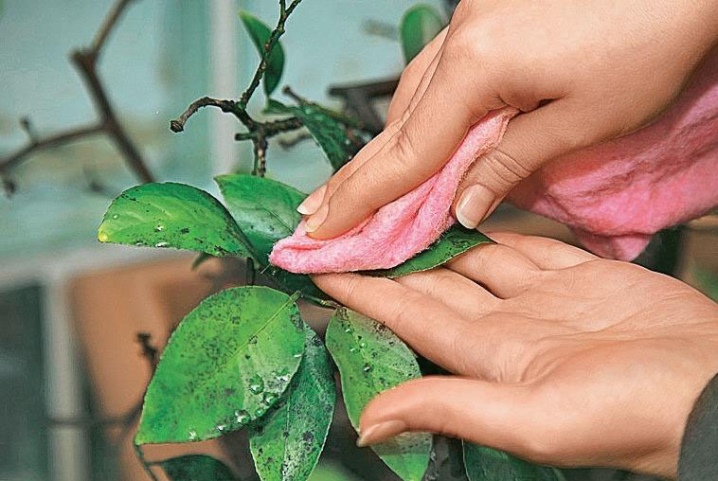
Biological agents
These are all kinds of glue yellow traps, bio-preparations, as well as useful predatory insects that are attached to pests. The traps are mainly for flying insects such as sciarids, thrips, whiteflies and others. Biological preparations include Fitoverm, Iskra-BIO, Verticillin, Mycoafidin. These preparations must be diluted, following the instructions, in the required proportions with water and sprayed on the plant.
The big plus is that these products are not toxic to humans and pets.
Treatment with alcohol or water-oil emulsion of both the plant itself and the soil is possible. Leaves with a smooth glossy surface are washed with alcohol using a cotton pad.An oil emulsion in the form of a spray is applied to the stems and leaves, its action is to block the respiratory tract of the parasites. In either case, some time after treatment, the plant should be rinsed well under a warm shower. Another variant of biological influence is predatory insects, such as wasps, predatory mites, gall midges, and gold-eyed insects. They quite effectively exterminate pests without damaging the plant.
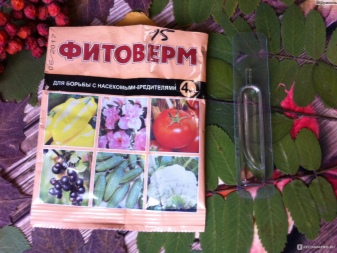
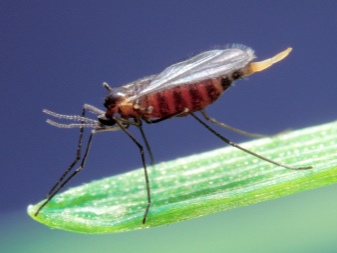
Chemicals
The most effective means in the fight against harmful insects are chemical insecticides. It is advisable to leave their use as a last resort, when more and more environmentally friendly methods have already been tried, since they are still toxic to humans, animals, and the environment in general. Therefore, the instructions for use must be strictly followed, the main points of which are:
- mandatory use of personal protective equipment such as gloves, respirators;
- strict adherence to the instructions contained in the package for use;
- adherence to the recommended intervals for processing plants;
- processing of plants is mandatory in an open space or with wide open windows;
- storage out of the reach of children and pets;
- disposal of residues in specially designated places.
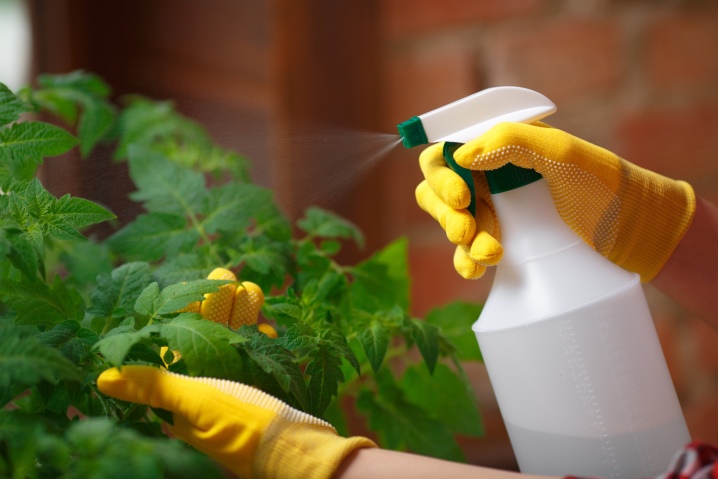
It should be noted that prolonged use of the same drug can be addictive, so it is advisable to change them from time to time. Nowadays, this is not difficult, since the latest chemical products are produced almost every year. Chemicals are produced in the form of powders in sachets or liquids in ampoules, as well as in the form of water-soluble granules.
According to the method of exposure, chemical preparations are divided into systemic (intestinal) and contact. The fastest-acting remedies are Karbofos, Pyrethrum, Chlorofos. More lasting effect is provided by "Karate", "Decis", "Cypermethrin". Such a preparation, for example, as "Actellik", for use refers to contact insecticides and is suitable for the destruction of almost all types of harmful insects.
For long-term action, you can dilute "Aktar", "Fufanon-Nova", "Inta-Vir", "Neoron" in the required proportions in water, spray them with a spray bottle on the affected plant, then you can cover the pot with the plant with a film or bag and leave on night for the best effect. With the same solution, it is necessary to process the soil, and the pot with the pallet, and the window glass.
This whole procedure has a prolonged effect of drugs on parasites, at least for a couple of weeks.
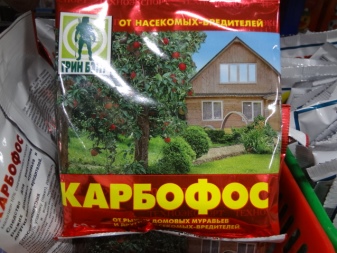
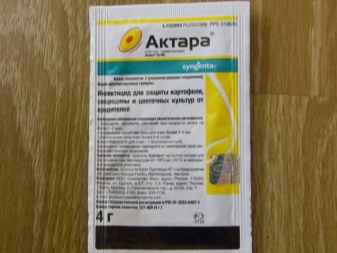
Traditional methods
Many housewives still prefer to use folk recipes for pest control. Perhaps these funds do not work as quickly and effectively as chemistry, but the result, with due diligence, will not keep you waiting, because the means are tested by time. And what is important, in terms of environmental friendliness, such methods do not pose any danger to others.
- Decoctions of herbs such as yarrow, dandelion, wormwood, chamomile, celandine and calendula can be sprayed on plants every day until all insects disappear.
- Onion and garlic water is prepared from chopped pulp and boiled water. This water can be used for both irrigation and spraying. You can also boil onion skins with boiling water.
- Infusions of spices such as cinnamon, ground black pepper, or chili are used. Before use, they must be diluted with water, since a concentrated solution can burn the plant. Pieces of citrus peel can be dug into the soil, the bright smell of essential oils will scare away insects.
- Green Soap is a very effective remedy. 30 g of potassium soap should be diluted in 1 liter of water and the leaves should be washed every 3-4 days for 2 weeks.
- You can sprinkle the plant itself and the soil in the pot with dry tobacco dust, ash or mustard powder. Or also prepare an infusion from them.
- Potassium permanganate, soda, vinegar, furacilin, boric acid - this is an incomplete list of agents that also effectively act on pests.
- Strong-smelling plants such as geraniums repel some species of flying insects.
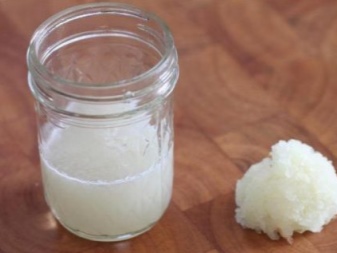
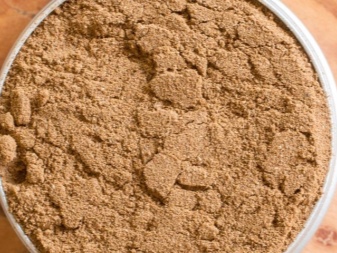
It is advisable to add laundry soap, tar soap or some kind of detergent to all the proposed solutions. They themselves serve as a good insecticidal agent, but they also create an adhesion effect.
For information on how to get rid of scale insects on indoor flowers, see the next video.































The comment was sent successfully.